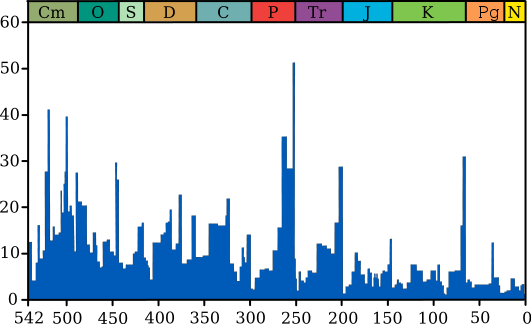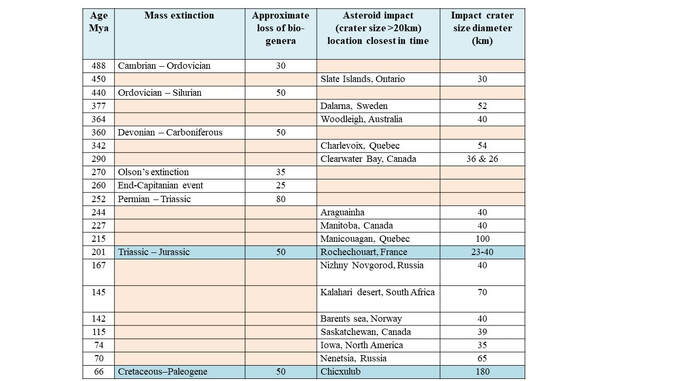Throughout geological history species have arisen and disappeared. The causes of a species going extinction can be many; ranging from, for examples; disruption to their food chain; predator dominance; fertility reductions; disease susceptibility; failure to adapt to evolving environmental conditions and habitat changes; and large scale vulcanism.
(Note – the climate change we are currently experiencing on Earth is often cited by those who dispute the anthropological nature of these as being a realisation of the Milankovitch cycles of the Earth’s orbit. This is wholly incorrect and based on a complete lack of understanding of the latter). We address this partly in our article on Ice and Climate change although it seems we may need to write a more detailed description of the Milankovitch processes to dispel the damaging conspiracy theory.)
Asteroid/Comet Impact correlation to mass species extinction events.
The table below shows the time frame of major asteroidal impacts (defined here as one which produces a crater > 25km in diameter) over the last 500 million years, in comparison to the timeframe of mass extinction events (where at least 20% of all biological genera become extinct).
The table shows that whilst Chicxulub and Rochechouart are coincident with mass extinctions, it’s clear that mass extinctions do not necessarily follow on from a large impact. The Manicouagan impact appears not to have led to a mass extinction (although it should be noted this is ‘definition’ dependent; about 10% of genera became extinct at the same time as the Manicouagan event).
Conversely, there appears not to have been any significant asteroid impact within 38 million years of the largest mass extinction ever recorded, the extinction at the end of the Permian period. Our conclusions thus are:
- Mass species extinction events can be caused by planetary impact;
- Impacts are not the only causes;
- Impact events can contribute to mass extinction events alongside other causes.
Further reading
The Limousin Asteroid impact of the Triassic Rhaetian age
N Taylor. Observatoire Solaire. 2017. ISBN 978-1-999-904-41-8
https://www.amazon.co.uk/Limousin-Asteroid-Impact-Triassic-Rhaetian/dp/1999904419
Next Month
We will look at the Chelyabinsk and Tunguska events.



